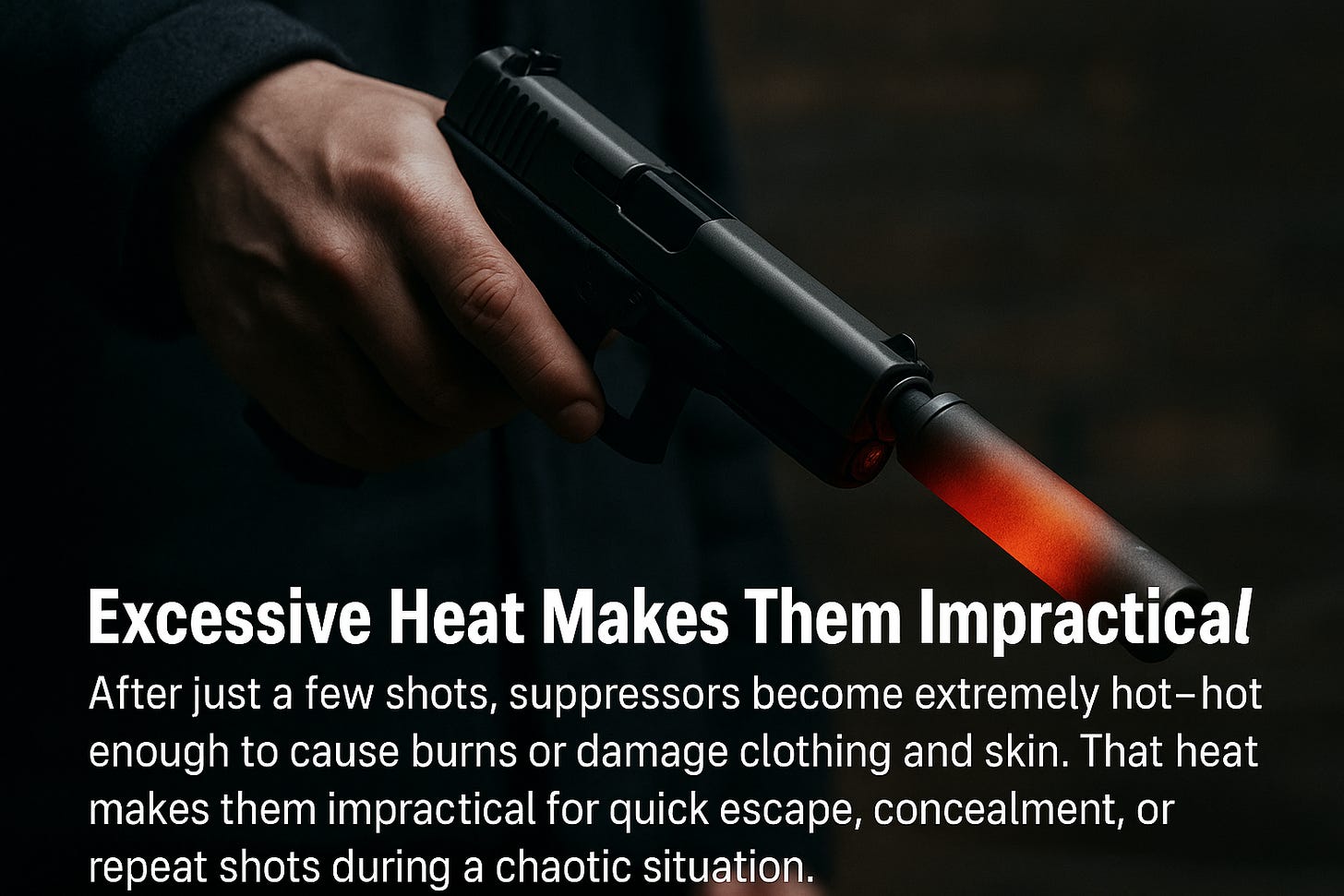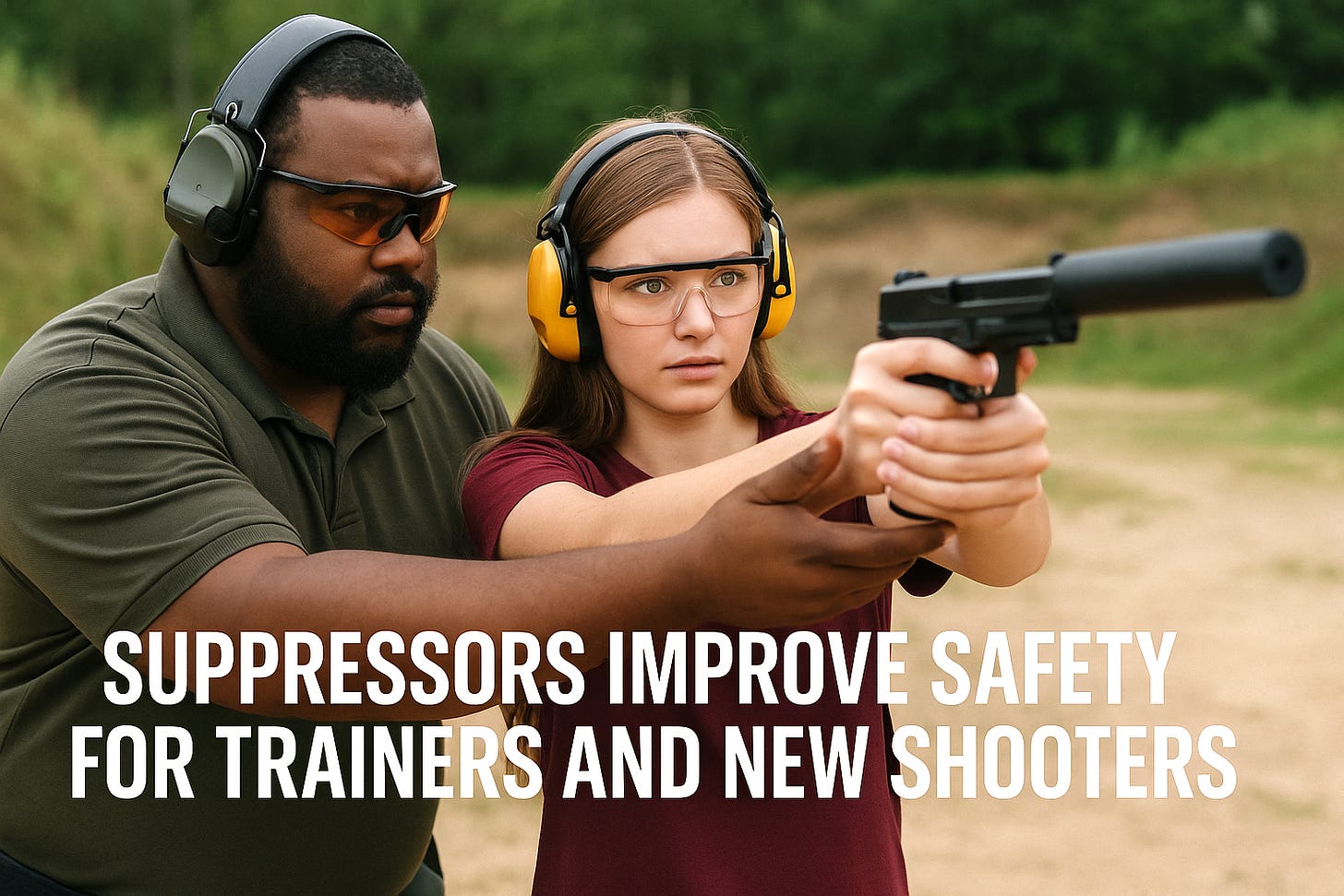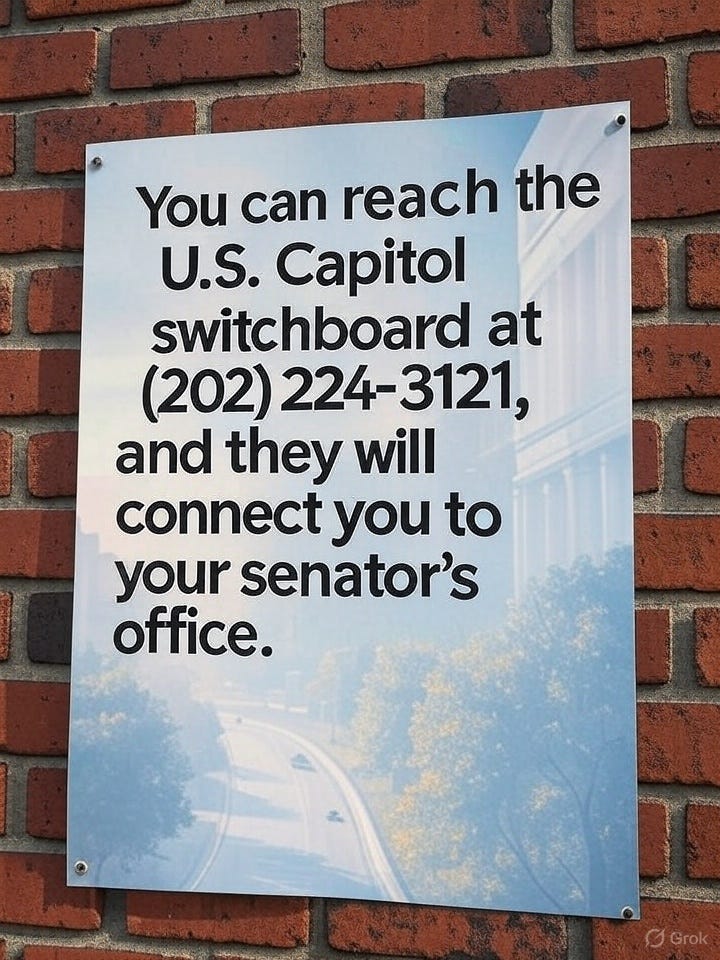Suppressors: Useless for Crime, Valuable for Safety
Real Story of Suppressor Ownership in America
Suppressors, often sensationalized in movies and television, are commonly misunderstood by the public and lawmakers alike. These devices, also known as silencers, are portrayed as tools of stealth and violence. But in reality, suppressors are bulky, expensive, tightly regulated—and critically misunderstood. Far from aiding criminals, suppressors actually make poor tools for illicit activity. Here’s why.
Why Suppressors Are Useless for Crime
Criminals want tools that are easy to conceal, quick to use, and hard to trace. Suppressors are none of those. Here are five major reasons suppressors are a poor choice for any criminal intent:
1. Size and Length Make Concealment Difficult
Suppressors add 5 to 10 inches of length to a firearm, making handguns much harder to conceal under clothing or carry discreetly. Criminals typically prefer compact, concealable weapons—sawed-off shotguns or pocket pistols—not long, obvious tools that attract attention.
2. Suppressors Do Not Eliminate Sound
Contrary to what Hollywood shows, a suppressor doesn’t make a gun silent. Suppressed gunshots still produce sound levels ranging from 120–135 decibels—louder than a jackhammer or ambulance siren. That’s plenty loud enough to alert people nearby or be picked up by surveillance or witnesses.
3. Excessive Heat Makes Them Impractical
After just a few shots, suppressors become extremely hot—hot enough to cause burns or damage clothing and skin. That heat makes them impractical for quick escape, concealment, or repeat shots during a chaotic situation. Some law enforcement videos even show suspects burning themselves trying to remove or stash hot suppressors.
4. They Slow Down the Firearm’s Handling
Suppressors add bulk and weight to the front of a firearm, changing its balance and slowing down how quickly it can be drawn, aimed, or used in confined spaces. In a fast-moving or panicked criminal situation, these split-second delays are liabilities. Most criminals favor speed and simplicity, not front-heavy setups that require careful handling.
5. Suppressors Don’t Solve Criminal Objectives
Suppressors don’t enhance lethality, make firearms more accurate, or enable any form of violence more effectively. Criminals are typically more focused on speed, intimidation, or desperation than subtlety or “quiet shots.” The reality is, most crime involves stolen guns, not carefully accessorized ones.
The Positive Case for Unregulated Suppressors
Suppressors are not tools of crime. They are tools of safety, utility, and hearing protection for law-abiding citizens. Removing their classification under the NFA would not increase criminal misuse—but it would make them more accessible to the responsible public. Here’s how:
1. Hearing Protection for Shooters and Bystanders
Suppressors dramatically reduce the muzzle blast of firearms, helping to preserve hearing. Even with ear protection, repeated exposure to gunfire can cause permanent hearing loss. Hunters, instructors, range officers, and new shooters all benefit from reduced sound levels.
2. Reduces Noise Pollution in Rural and Recreational Areas
For people who live near shooting ranges or public lands, suppressors reduce the noise footprint of lawful recreational shooting. In Europe—where suppressors are often encouraged—they’re seen as polite and responsible gear for countryside use.
3. Improves Safety for Trainers and New Shooters
The reduced blast and recoil from suppressed firearms make them ideal for teaching safety and technique, especially to new or nervous shooters. Less flinch means better marksmanship and safer gun handling habits.
4. Encourages More Outdoor Activity and Responsible Use
When shooting is less harsh on the ears, it becomes more approachable. Suppressors help remove the stigma of “loud guns” and instead emphasize safe, responsible recreational use of firearms—just like hearing protection in construction or aviation.
5. Aligns with Second Amendment Values
Removing suppressors from the NFA would be a small but meaningful reform that honors the principle that law-abiding citizens should not face unnecessary burdens to exercise their rights. It would also free up ATF resources from redundant paperwork and tracking of accessories that are virtually never used in crime.
Suppressors are not a criminal’s tool—they’re a tool for safety, civility, and common sense. The data, experience, and international norms all point toward the same conclusion: It’s time to remove suppressors from the NFA and treat them like the hearing protection devices they truly are.
Suppressor History
1902 – Hiram Percy Maxim begins developing firearm silencers in the United States.
1909 – Maxim Silencer is patented (U.S. Patent No. 916,885).
1910s – Maxim silencers sold for $3–$7; marketed to hunters, marksmen, and outdoorsmen.
1913 – U.S. Army adopts Maxim silencers for limited, specialized applications.
1934 – National Firearms Act (NFA) passed:
Suppressors included under strict regulation.
$200 tax stamp required (equivalent to ~$4,500 today).
1940s – OSS (precursor to the CIA) uses suppressed firearms like the Welrod in WWII.
1968 – Gun Control Act passed, reinforcing suppressor oversight under the NFA.
1986 – Firearm Owners Protection Act (FOPA) signed:
Hughes Amendment bans new machine guns.
Suppressors not banned, but confusion around legality grows.
1990s – Suppressors normalized in Europe:
Encouraged for hunting and safety in countries like Finland, Norway, the UK, and France.
2005 – Suppressors legalized for civilian use in Utah, Alaska, and other U.S. states.
2008 – Companies like Advanced Armament Corp. (AAC) develop lighter, modular suppressors.
2011 – Hearing Protection Act introduced in U.S. Congress (does not pass).
2012 – ATF introduces e-Forms system for online Form 1/Form 4 filings.
2015 – SilencerCo launches major public awareness campaign promoting suppressor use.
2017 – Hearing Protection Act reintroduced:
Dies in committee after the Las Vegas mass shooting.
2018 – Suppressors legalized for hunting in 42 U.S. states.
2019 – President Trump publicly criticizes suppressors after Virginia Beach shooting.
2020 – ATF Form 4 wait times fall below 10 months for some applicants.
2022 – Biden administration signals interest in more suppressor regulation:
No legal changes made; suppressors remain under NFA.
2023 – Over 3 million suppressors registered in the U.S., per ATF data.
2024 – ATF Form 4 e-file wait times average 180–270 days.
Suppressors are far from rare or mysterious—they’re common, increasingly popular, and widely embraced by responsible gun owners. According to ATF data, the number of legally registered suppressors has skyrocketed from under 300,000 in the early 2000s to over 3 million by 2023. This rapid growth reflects their everyday use for hunting, training, and hearing safety—not criminal intent.
The only real barrier to broader adoption is cost: a $200 tax stamp, long wait times, and regulatory burdens that disproportionately affect lower-income gun owners.

















And barely protect your hearing. But they do to an extent.